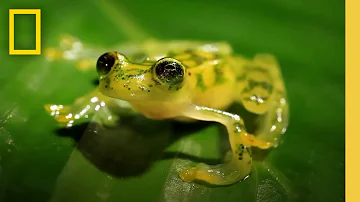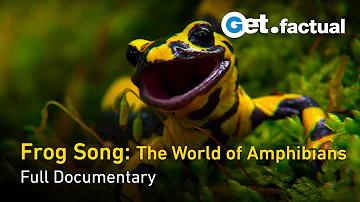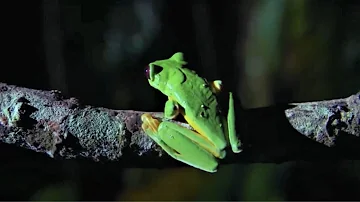
Mimic Glass Frog
Hyalinobatrachium mimina

Meet the Mimic Glass Frog
The Mimic Glass Frog is a small, translucent amphibian native to the rainforests of Ecuador and Colombia. It is renowned for its transparent underbelly, which reveals its internal organs, and its ability to mimic the appearance of toxic species for protection. This frog is primarily nocturnal and spends much of its life on leaves above streams, where it lays its eggs. Its delicate appearance and elusive nature make it a fascinating subject for herpetologists.
Classification
Amphibian
Habitat
Lowland and foothill rainforest near clear running streams
Diet
Carnivore
Lifespan
3-7 years
Conservation
Least Concern
Weight
2-5 grams
📖Fascinating Facts
Translucent Skin
Their belly skin is almost completely transparent, allowing you to see the heart, liver, and digestive tract.
Parental Care
Male Mimic Glass Frogs vigilantly guard their eggs on leaves above streams and hydrate them to prevent desiccation.
Mimicry Defense
They mimic the appearance of toxic leaf frogs, which helps deter predators despite being harmless themselves.
📋Detailed Description
The Mimic Glass Frog (Hyalinobatrachium mimina) is a diminutive amphibian, typically measuring between 19–22 mm in snout-vent length. Its most striking feature is the translucent ventral skin, which makes the internal organs, including the heart and gastrointestinal tract, clearly visible—a trait that aids in camouflage among the dappled light of rainforest foliage. The dorsal surface is light green with subtle yellow or white spots, and the skin is smooth and moist, facilitating cutaneous respiration. This species is renowned for its mimicry of more toxic glass frog species, a form of Batesian mimicry that deters predators. H. mimina is primarily arboreal and nocturnal, spending daylight hours motionless on the undersides of leaves above fast-flowing streams. Its large, forward-facing eyes provide excellent night vision, aiding in the detection of prey and predators. The species is solitary outside of the breeding season, with males establishing small territories during reproductive periods. Its delicate, slender limbs and expanded toe pads are specialized for gripping wet vegetation. The Mimic Glass Frog's elusive nature and cryptic coloration make it a challenging subject for field researchers, contributing to gaps in knowledge about its full ecological role.
💡 Did you know?
Despite their delicate look, Mimic Glass Frogs are capable of leaping several times their body length to escape danger.
🔬Research & Sources
🎭Behavior & Social Structure
Hyalinobatrachium mimina exhibits primarily nocturnal activity, emerging at dusk to forage for small arthropods such as ants, spiders, and flies. It employs a sit-and-wait hunting strategy, remaining motionless on leaf surfaces and ambushing passing prey. Males are territorial during the breeding season, producing soft, high-pitched calls to attract females and ward off rivals. Outside of reproductive periods, individuals are largely solitary and exhibit minimal social interaction. The species is highly sensitive to vibrations and sudden movements, quickly retreating to the underside of leaves or leaping into streams when threatened. During the day, it remains inactive, relying on its translucency and stillness for camouflage. H. mimina demonstrates site fidelity, often returning to the same leaves or territories night after night.
👶Reproduction & Life Cycle
Breeding in Hyalinobatrachium mimina is closely tied to the rainy season, typically spanning from November to March in its native range. Males establish calling sites on leaves overhanging streams and emit species-specific vocalizations to attract females. Once a female selects a mate, amplexus (the mating embrace) occurs, and the female deposits a clutch of 20–30 gelatinous eggs on the underside of a leaf. The male often remains nearby to guard the clutch from predators and desiccation, a form of paternal care observed in many glass frog species. Embryonic development lasts 10–14 days, after which the tadpoles drop into the stream below, where they continue development in the aquatic environment. There is no further parental involvement after hatching.
🛡️Adaptations & Survival
The Mimic Glass Frog's most notable adaptation is its transparent ventral skin, which provides camouflage by allowing the frog to blend seamlessly with the mottled light of the rainforest canopy. Its dorsal coloration mimics that of toxic or unpalatable glass frog species, reducing predation through visual deception. The expanded toe pads enhance grip on wet, slippery leaves, while the streamlined body and long limbs facilitate agile movement among dense foliage. Cutaneous respiration is highly developed, supplementing pulmonary breathing in the humid, oxygen-rich environment. The species' nocturnal habits reduce exposure to diurnal predators and minimize water loss. Acoustic communication is finely tuned to the ambient noise of running water, with calls adapted to carry over the sound of streams.
📚Research Sources
🎨Cultural Significance
Glass frogs, including H. mimina, hold a place in local folklore as symbols of transparency and fragility. In some indigenous cultures of the Amazon, their translucent bodies are associated with themes of invisibility and spiritual passage between worlds. While not commonly featured in traditional medicine or rituals, their unique appearance has made them subjects of fascination in eco-tourism and environmental education programs. The species' role as an indicator of ecosystem health has been highlighted in conservation campaigns, emphasizing the importance of preserving riparian habitats.
🔬Recent Research & Discoveries
Recent studies have focused on the evolutionary origins of transparency and mimicry in glass frogs, with H. mimina providing key insights into the genetic and ecological drivers of these traits. Acoustic analyses have revealed that its call structure is adapted to minimize overlap with sympatric species, reducing hybridization risk. Ongoing research is examining the species' susceptibility to chytrid fungus and the potential impacts of climate change on its reproductive phenology. Advances in non-invasive imaging have allowed researchers to monitor physiological health and reproductive status without harming individuals. Genetic studies are clarifying the phylogenetic relationships within the Hyalinobatrachium genus, with H. mimina serving as an important taxon for understanding speciation in Neotropical amphibians.
🎥Wildlife Videos

The Glass Frog: Ultimate Ninja Dad | Animal 24
About National Geographic: National Geographic is the world's premium destination for science, exploration, and adventure.
National Geographic

The Glass Frog: Nature's See-Through Wonder!
Ever stumbled upon a creature so see-through, you'd think it's a ghost? Well, it's not a ghost but something just as cool - the Glass ...
Learn about Animals

Frog Song: The World of Amphibians - Full Documentary
Amphibians are living fossils in a modern world. The various species of frogs, toads, and salamanders are more diverse than you ...
Get.factual

Best Of Frogs | Top 5 | BBC Earth
Welcome to BBC EARTH! The world is an amazing place full of stories, beauty and natural wonder. Here you'll find 50 years worth ...
BBC Earth

The Mysterious Glass Frog | Cinematic Nature Documentary Voice Over
Journey deep into the heart of the Amazon Rainforest to discover one of nature's most fascinating hidden wonders: the glass frog.
Todd Casper Voice-Over Artist

the invisible frog? | all about glass frogs
spend a minute with us discussing glass frogs for our first episode. these cute little things are more than what meets the eye- if you ...
cranberry studios
🌍Habitat Information
The Mimic Glass Frog typically inhabits Lowland and foothill rainforest near clear running streams environments. Mimic Glass Frogs have adapted to their environments with specialized features and behaviors.
Primary Habitat:
Lowland and foothill rainforest near clear running streams
More detailed habitat information will be available soon.
🛡️Conservation Status
The Mimic Glass Frog is currently classified as Least Concern. Conservation efforts are crucial for preserving this species for future generations.
Common Threats:
- 🏠Habitat loss and fragmentation
- 🌡️Climate change impacts
- 🎯Hunting and poaching
- 🏭Human-wildlife conflict
⚠️Threats & Conservation Challenges
Although currently listed as Least Concern by the IUCN, Hyalinobatrachium mimina faces localized threats from habitat loss due to deforestation, agricultural expansion, and water pollution. The species is sensitive to changes in microhabitat, particularly the loss of riparian vegetation and the alteration of stream flow. Climate change poses a long-term threat by altering rainfall patterns and stream dynamics. While not currently targeted by the pet trade, increased interest in glass frogs could pose future risks. Population trends are stable in protected areas, but declines have been noted in regions with significant human encroachment. Disease, particularly chytridiomycosis caused by the chytrid fungus (Batrachochytrium dendrobatidis), is a potential emerging threat, though its impact on H. mimina remains under-studied.
🔬Scientific Classification
Scientific Name
Hyalinobatrachium mimina
Classification Hierarchy
🔍 About Taxonomic Classification
Taxonomic classification is a hierarchical system used by scientists to classify and organize living organisms based on shared characteristics and evolutionary relationships.
The system moves from broad categories (Kingdom) to increasingly specific ones, with each animal's scientific name typically consisting of its Genus and species.
📝Community Notes
Share your observations and insights about the Mimic Glass Frog with our community of wildlife enthusiasts.
Join Our Community
Sign in to share your observations and connect with fellow wildlife enthusiasts.
Sign In to ContributeNo community notes yet
Be the first to share your observations about the Mimic Glass Frog!
Explore Mimic Glass Frog
Select a tab above to learn more about this amazing animal.
📸Photo Gallery
No photos available for this animal yet.
🌟Discover More Wildlife
Continue your journey of discovery with more fascinating animals from our database
